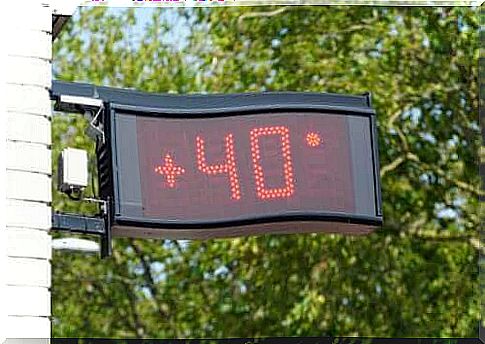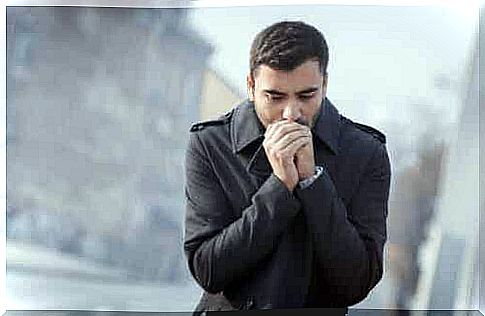How Do Extreme Temperatures Affect The Human Body?

Exposure to extreme temperatures can cause serious health effects or even death. The adverse effects of extreme temperatures are particularly evident in temperate countries, especially during the winter and summer months. In this article, we talk about how extreme temperatures affect the human body.
The ideal body temperature is about 36 degrees Celsius. When the body temperature is over 40 degrees, it is hyperthermia, or heat stroke, and when the body temperature is below 36 degrees, it is hypothermia, a decrease in different body temperature. Extreme temperatures can lead to either state fairly quickly.
Want to know more about how extreme temperatures affect the human body? In this article, we answer the most common questions on the subject.
How do extreme temperatures affect the human body?
There are many biological mechanisms involved in human thermoregulation. In addition to these, a person has the ability to wear supplies and clothing designed to prevent heat or cold.
For example, in hot weather, the heat evaporates and the blood vessels on the surface of the body dilate to get rid of the fluid in the form of sweat. In cold weather, the opposite happens, allowing blood circulation to focus on the vital organs.
How does the body react to extreme heat?

Extremely hot climatic temperatures can have serious health consequences if they last longer. Temperatures vary from region to region. For this reason, adaptation mechanisms depend on the environment in which a person lives.
It is extreme heat when the temperature is ten degrees higher than the average maximum temperature in that area. However, such conditions should prevail for several weeks.
Symptoms and reactions to exposure to extreme heat
The most common clinical manifestations during a heatwave are:
- Muscle pain, headache and abdominal pain.
- Heavy sweating.
- Fatigue and fainting.
- Nausea.
- Increased heart rate.
Regulation and prevention of symptoms
During hot weather, it is important to follow certain recommendations to avoid damage to your health. Basics include installing fans or air conditioning, which can incur unexpected financial costs.
If your house has several windows, it may be necessary to purchase blinds for them. You can also make cardboard and aluminum foil guide plates that direct sunlight in another direction.
Other basic things in hot weather are abundant water intake and keeping airy clothes, both outdoors and indoors. In public areas, it is advisable to go to air-conditioned places, and if you experience any of the above symptoms, seek medical attention immediately.
Risk groups
Both the elderly and children are more prone to complications caused by extreme temperatures. People with chronic illnesses, especially those with cardiovascular disease or kidney disease, should also be especially careful.
How does the body react to extreme cold?

The definition of extreme cold is the opposite of extreme heat. Extremely cold temperatures often occur in temperate countries and during snowstorms.
Symptoms and reactions to exposure to extreme cold
- Chills and muscle cramps.
- Tingling of limbs.
- Loss of awareness.
- Discoloration of limbs.
All of these symptoms, especially the last two, signal an immediate need for medical treatment.
Regulation and prevention of symptoms
As with heat waves, it is possible to prevent the negative effects of extremely cold conditions. Follow these recommendations:
- Don’t go out unless you absolutely have to.
- Keep easily accessible tools to remove snow from your environment.
- Lay on your clothing and provide good protection for your hands, feet, ears, neck and head.
- Install the heater system in good time.
- Plan how to get to the emergency room in case of an emergency.
- Get canned food in case of power outages.
Risk groups
Extreme age groups such as the elderly and children, as well as the chronically ill, are more vulnerable to the effects of extreme cold. People with reduced mobility should avoid going out completely, as snowfall can cause additional obstacles to movement.
It is important to consider extreme temperatures
Exposure to extreme temperatures requires the lives of thousands of people every year – that is, more lives than natural disasters require. In the most developed countries in the temperate zone, governments have developed various strategies to help reduce the loss of human life caused by extreme conditions.
You can call your local Red Cross in an emergency and ask your doctor if you have any doubts.









